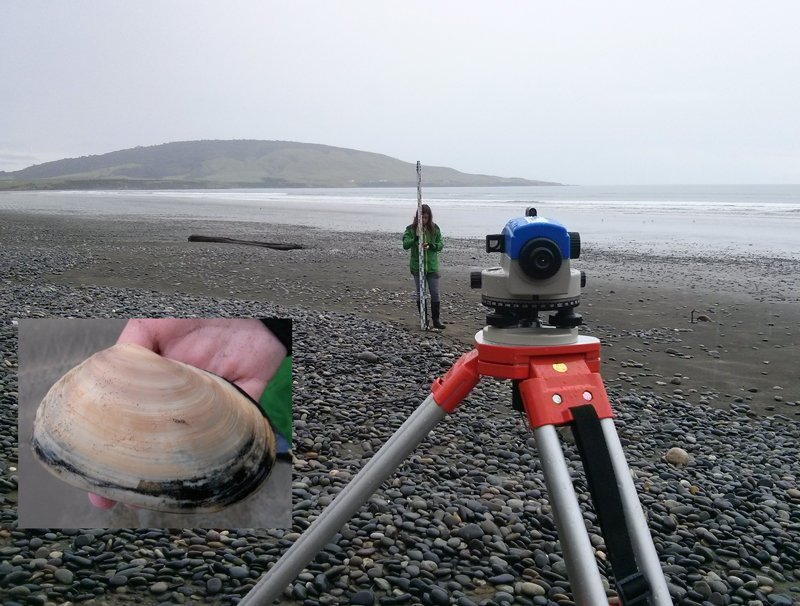Dragonfly are surveying cockle and pipi populations in the wider Auckland region and toheroa in Southland for the Ministry for Primary Industries (MPI).
The work in northern New Zealand is currently underway, with Katrin leading the project. “I’m a soft-sediment ecologist so it’s a good opportunity to get into this kind of work and make use of my skills. We’re sampling a range of beaches, inlets and estuaries, from the Bay of Plenty to Whangarei.”
These bivalve surveys are part of MPI’s regular monitoring of the fisheries. The northern areas have been surveyed annually for the last few years, but the toheroa surveys in Southland are conducted more infrequently, with the previous one in 2009.
“Because the North Island surveys have been regular, we already have a good understanding of where the bivalves are. We are using a random stratified sampling design where we dig up several hundred cores that are 15 cm in diameter and 15 cm deep, then sieve the sand to count and measure the bivalves. Then we will analyse the data and write a report.”
“We’ve recruited six ecology students to help with the fieldwork but we’ve also contacted local iwi and the local communities to invite them to be involved if they would like to. They are very welcome.”
Cockles and pipi are available for recreational and customary fisheries, but due to decreases in abundance, some of the beaches have restrictions in place, and others are completely closed to fishing. MPI is particularly interested in how these populations are faring.
 Toheroa are New Zealand’s largest shellfish, and mature individuals can be more than 11 cm long. This treasured species was once very abundant on beaches in Northland and Southland but populations are now closed to recreational fishing, although there is still some customary take. The Dragonfly team will be sampling three Southland beaches for toheroa abundance and size distribution, including the 18 km long Oreti Beach. They visited the beaches in early January to plan the work.
Toheroa are New Zealand’s largest shellfish, and mature individuals can be more than 11 cm long. This treasured species was once very abundant on beaches in Northland and Southland but populations are now closed to recreational fishing, although there is still some customary take. The Dragonfly team will be sampling three Southland beaches for toheroa abundance and size distribution, including the 18 km long Oreti Beach. They visited the beaches in early January to plan the work.
“The environment is very different here, so we’ll be running transects from the shore to the water line, then digging up quadrats and sieving parts of those. The animals can burrow to about 20 cm depth, so we have to go quite deep.”
Burrowing ghost shrimp, the subject of Katrin’s PhD thesis and subsequent research, are also being counted. They co-occur with toheroa and may be having an impact on the decline of the toheroa populations.
“We want to establish what their densities are, compared with toheroa. Ghost shrimp are present in a relatively high density on these beaches and we know that their sediment disturbance has an impact on bivalves. Although toheroa are very large, there might be an impact on the recruitment of the juveniles, or the larvae may be ingested by the shrimp.”


